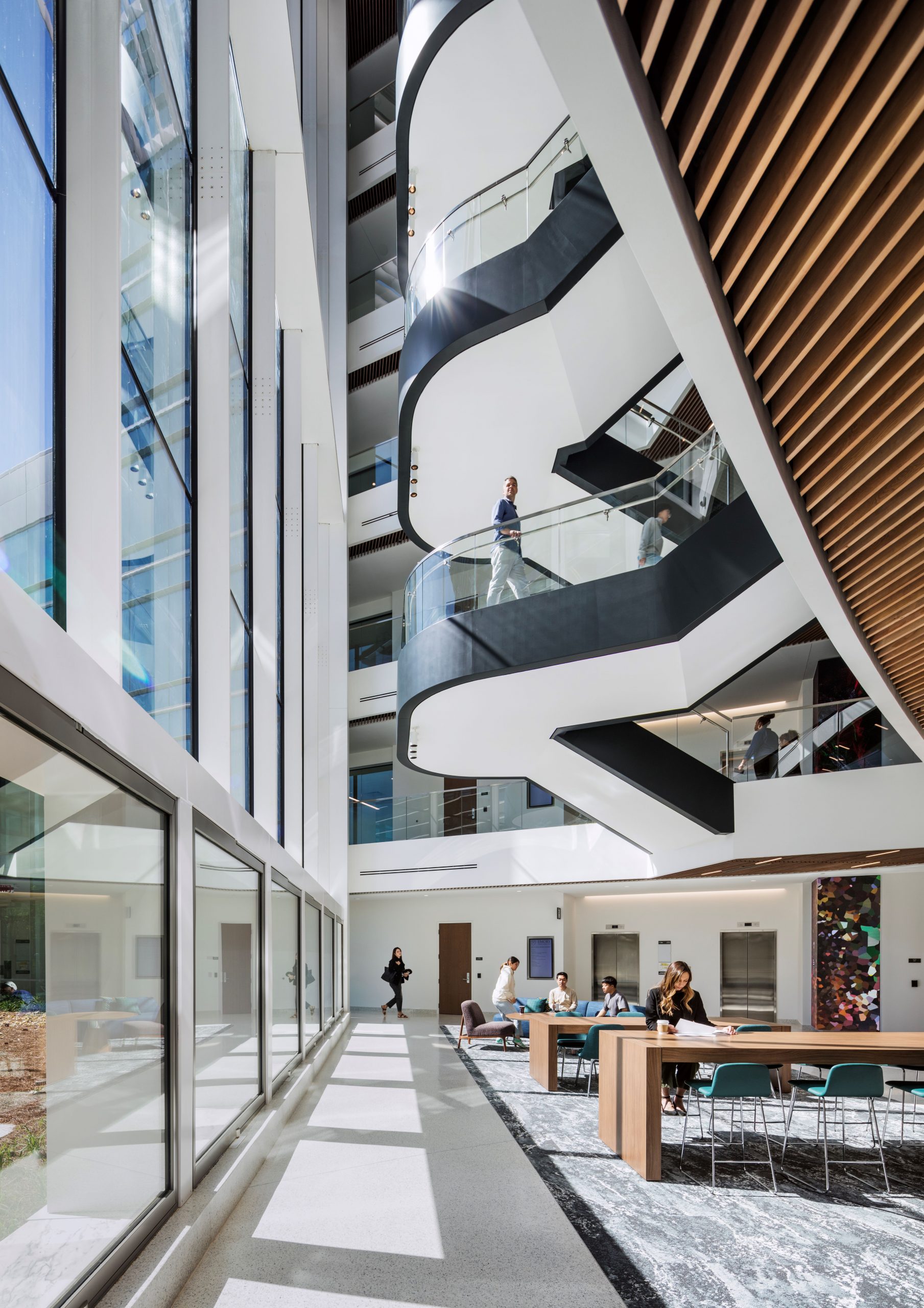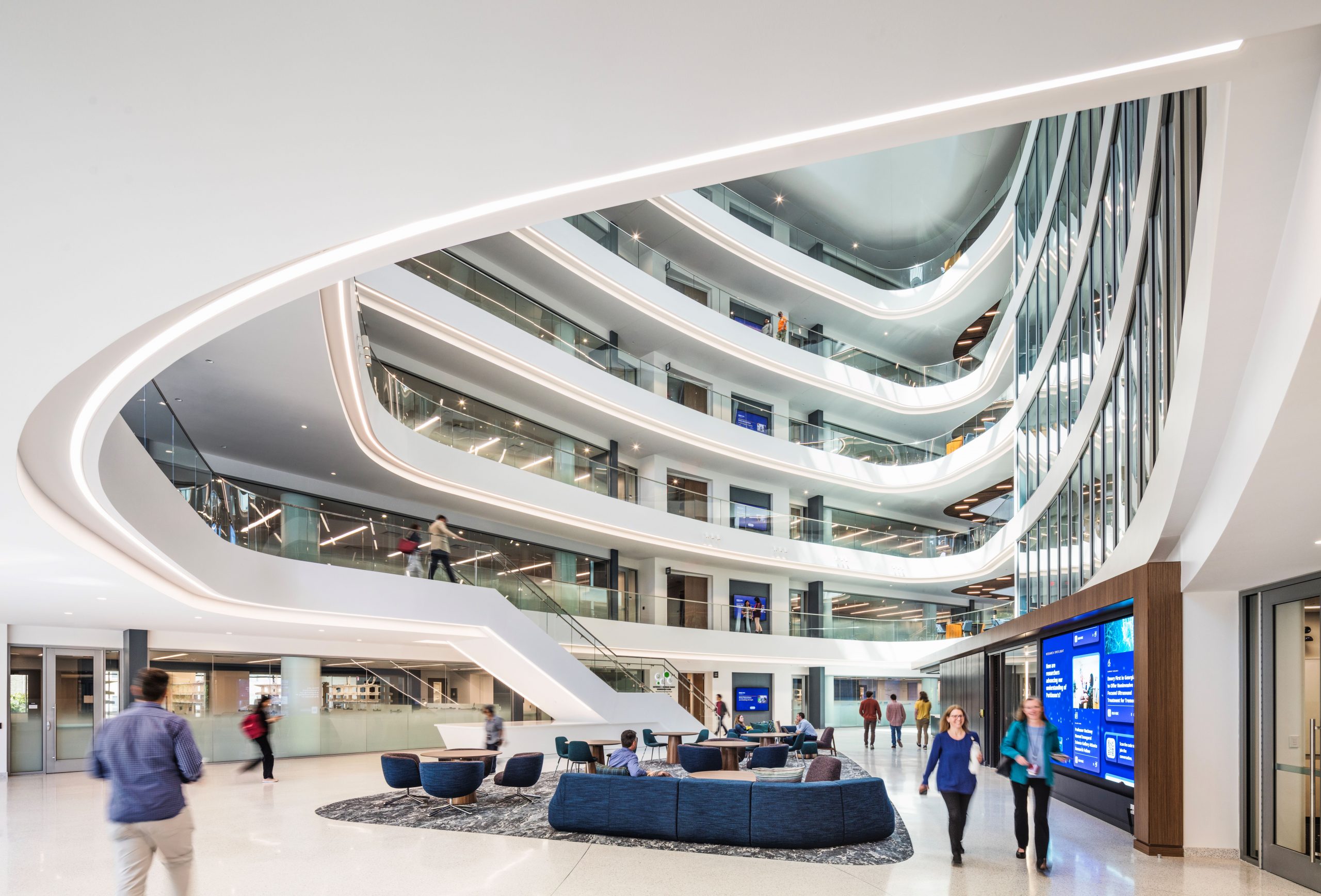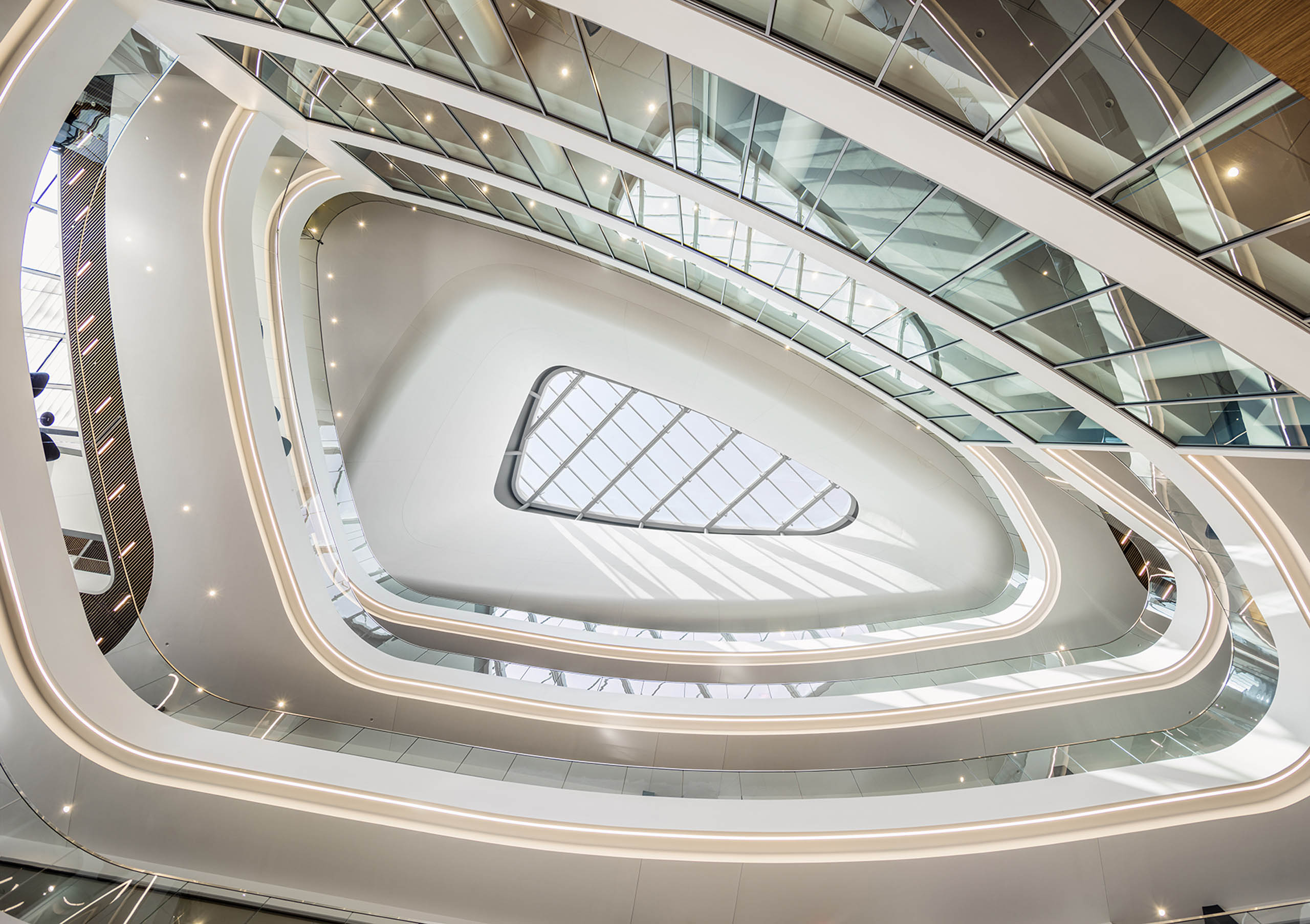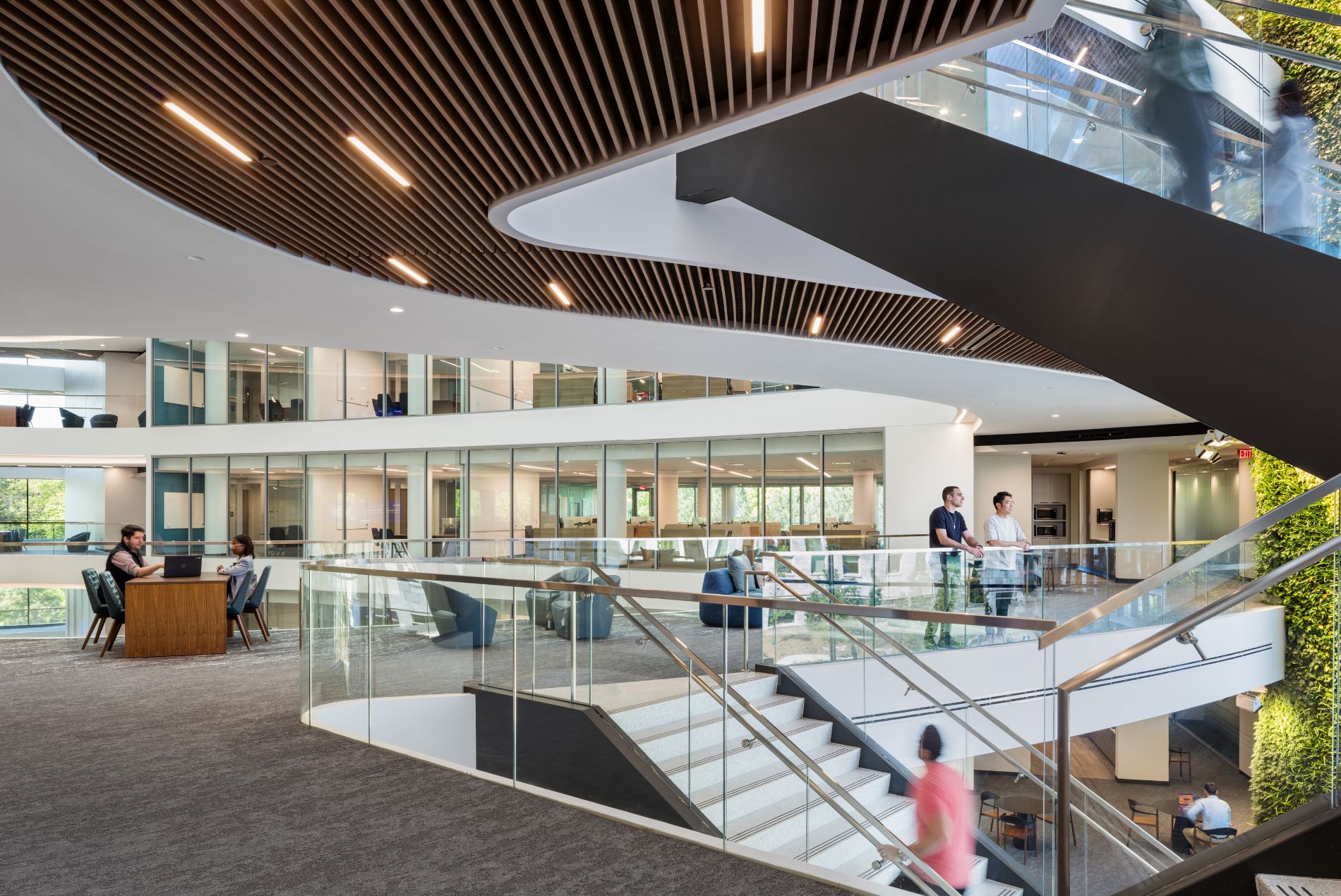Project Specs
Location: Atlanta, GA
Architectural Partners: HOK Architects
General Contractor: JE Dunn Construction
Scope of Work
Sculpted pedestrian bridges, a multi-tiered cantilever stair, a prominent full-height facade supported by a concealed truss at the roof level and a large skylight that fills the interior with natural light.
Overview
The Health Sciences Research Building II (HSRB II), is Emory’s biggest and most complex project - pushing the envelope for sustainability. HOK’s architects and engineers collaborated with Synergi on the design of several feature elements in the six-story central atrium. These include sculpted pedestrian bridges, a multi-tiered cantilever stair, a prominent full-height facade supported by a concealed truss at the roof level and a large skylight that fills the interior with natural light. Synergi collaborated with JE Dunn to execute a complex installation of the large statement stair in the central atrium, pictured below.




